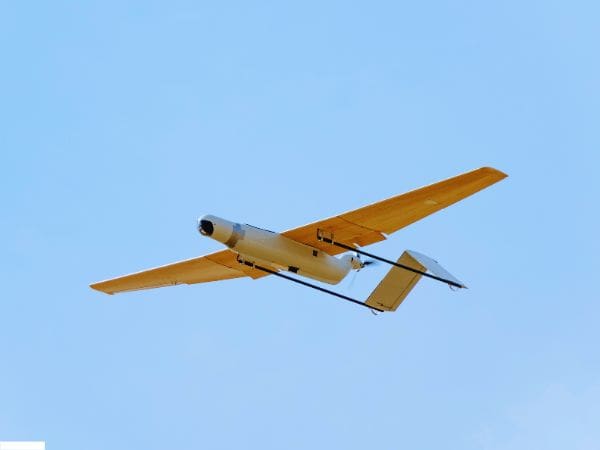On March 22, 2024, ISRO’s Pushpak (reusable launch vehicle prototype) achieved a significant milestone by autonomously landing on a runway after being released mid-air by a Chinook helicopter.
The Indian Space Research Organisation (ISRO) achieved a remarkable feat in space exploration when its reusable launch vehicle prototype, named ‘Pushpak,’ successfully executed an autonomous landing on a runway.
This groundbreaking achievement, which took place at the Aeronautical Test Range (ATR) in Chitradurga, Karnataka, marks a significant milestone in ISRO’s pursuit of developing advanced technologies for space travel and exploration.
About ISRO’S Pushpak:
The journey of Pushpak began when it was airlifted to an altitude of 4.5 kilometers by a Chinook helicopter operated by the Indian Air Force (IAF).
Released mid-air under off-nominal conditions, Pushpak embarked on a series of complex maneuvers to demonstrate its ability to autonomously approach and land on the designated runway.
Technological Advancements:
Equipped with state-of-the-art technologies including a brake parachute, landing gear brakes, and a nose wheel steering system, Pushpak showcased ISRO’s expertise in terminal phase maneuvering, landing, and energy management.
These advancements are crucial for enabling the safe and precise landing of spacecraft returning from space missions.
| ISRO’s reusable launch vehicle prototype ‘Pushpak’ achieved a significant milestone by autonomously landing on a runway. |
| Pushpak was dropped mid-air by a Chinook helicopter at an altitude of 4.5 kilometers. |
| The landing occurred at the Aeronautical Test Range (ATR) in Chitradurga, Karnataka. |
| This marked the second phase of ISRO’s reusable launch vehicle autonomous landing mission (RLV LEX-02). |
| Pushpak executed complex maneuvers and corrections to achieve a precise landing. |
| Equipped with a brake parachute, landing gear brakes, and nose wheel steering system. |
| The success of RLV LEX-02 signifies a significant advancement in ISRO’s efforts to develop a reusable launch vehicle. |
| The achievement underscores ISRO’s commitment to validating indigenous technologies in space exploration. |
The Significance:
The successful landing of Pushpak in the RLV LEX-02 mission represents a significant leap forward in ISRO’s efforts to develop reusable launch vehicles capable of space travel and return. By simulating high-speed landing conditions, ISRO aims to prepare for future missions involving the return of vehicles from space, thereby reducing costs and increasing efficiency in space exploration endeavors.
Validation of Indigenous Technologies:
ISRO’s commitment to validating indigenous technologies in control systems, deceleration systems, navigation, and landing gear is evident in the success of the RLV LEX-02 mission. These advancements not only showcase India’s capabilities in space exploration but also pave the way for further progress in the field.
Conclusion:
The successful autonomous landing of Pushpak by ISRO represents a significant achievement in space exploration, demonstrating India’s prowess in developing advanced technologies for space travel and exploration. As ISRO continues to push the boundaries of innovation, the future of space exploration looks brighter than ever before.
What is ISRO’s Pushpak?
ISRO’s Pushpak is a reusable launch vehicle prototype developed by the Indian Space Research Organisation (ISRO) to test autonomous landing capabilities.
When did Pushpak achieve its significant milestone?
Pushpak achieved its significant milestone on March 22, 2024.
What is the significance of Pushpak’s successful landing?
Pushpak’s successful landing signifies a significant advancement in ISRO’s efforts to develop a reusable launch vehicle capable of space travel and return.
How does Pushpak contribute to ISRO’s future space exploration endeavors?
Pushpak’s success contributes to ISRO’s future space exploration endeavors by validating indigenous technologies and preparing for missions involving vehicle returns from space.
Where did Pushpak autonomously land?
Pushpak autonomously landed on a runway at the Aeronautical Test Range (ATR) in Chitradurga, Karnataka.
You may also like:
India’s Aditya L1 Mission to Unveil Secrets of Sun’s Behavior and Space Weather Impact!
